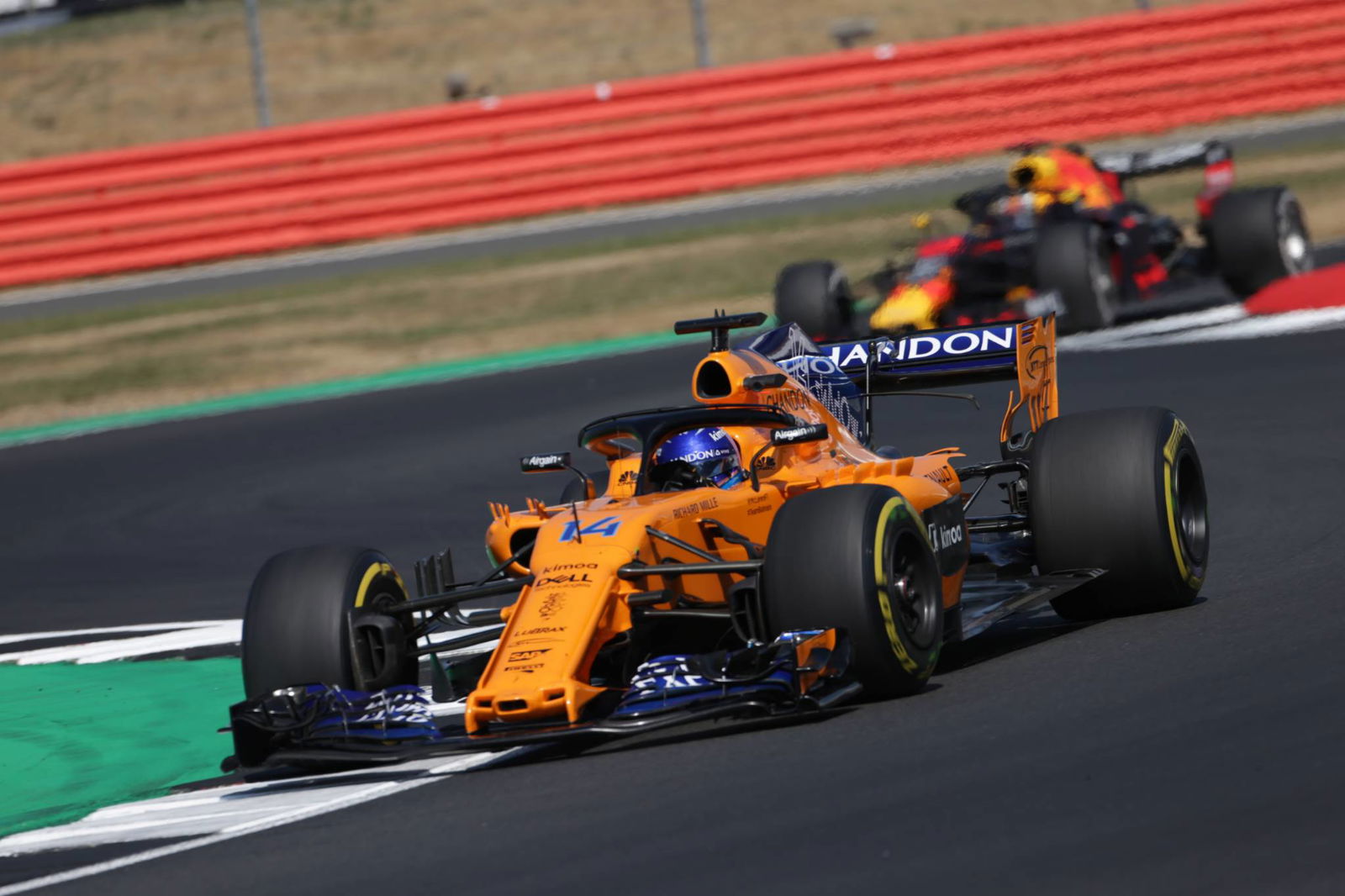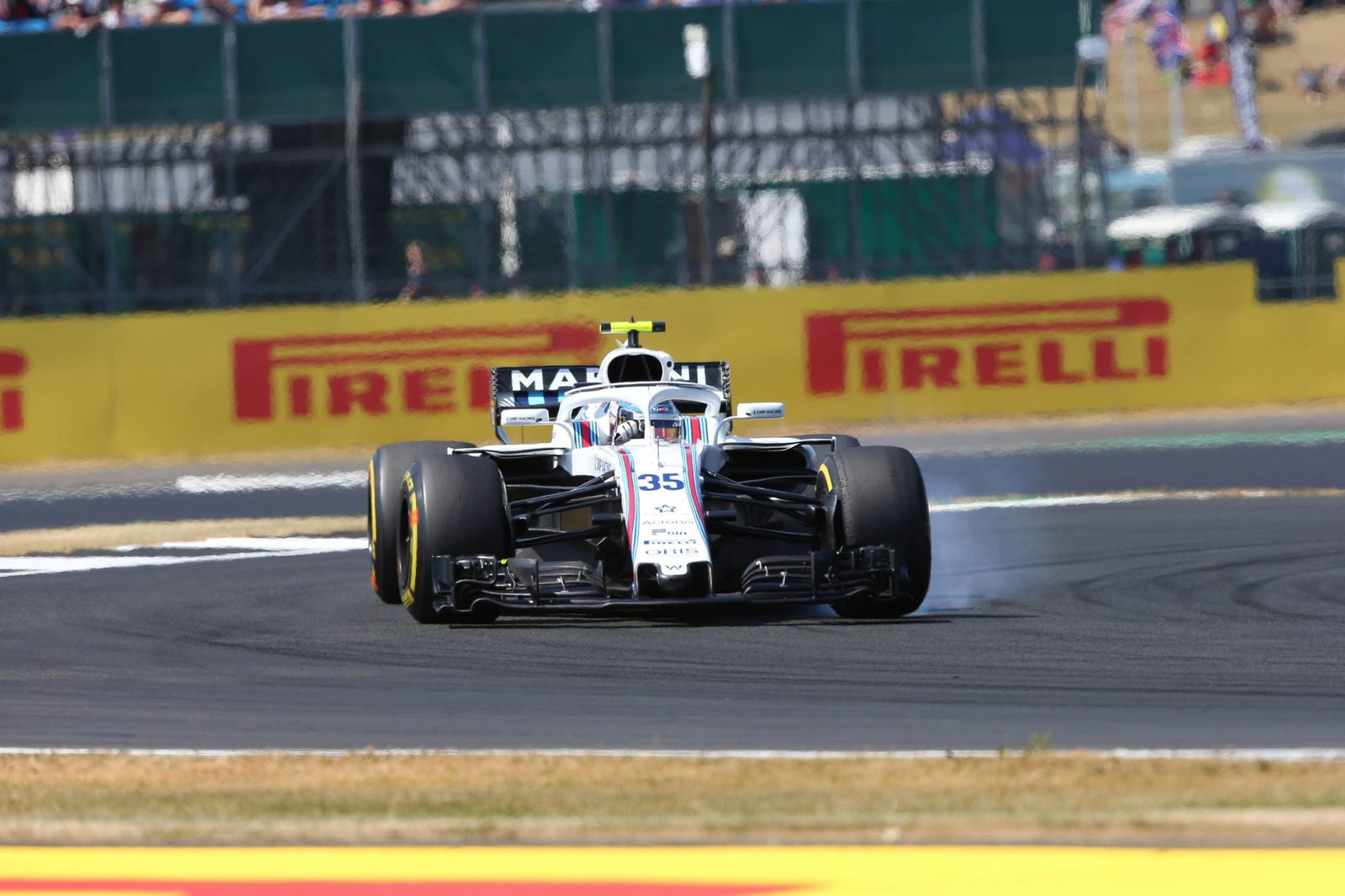Tech: Why McLaren and Williams are so slow
2018 was meant to be the year that McLaren were unleashed from the shackles of Honda and begin to push for race victories, but instead find themselves in total disarray as to why they are struggling and has ultimately led to heads rolling.
Williams, on the other hand, have slumped to the bottom of the grid following a change in car concept that has significantly hurt their performance with no apparent fix in sight.

2018 was meant to be the year that McLaren were unleashed from the shackles of Honda and begin to push for race victories, but instead find themselves in total disarray as to why they are struggling and has ultimately led to heads rolling.
Williams, on the other hand, have slumped to the bottom of the grid following a change in car concept that has significantly hurt their performance with no apparent fix in sight.
Qualifying for the British Grand Prix at Silverstone represented both teams’ ultimate challenges in 2018: Williams drivers Lance Stroll and Sergey Sirotkin last and second of those who took part in qualifying while each driver took a hefty trip through the gravel.
At McLaren life was a little lighter but representative of its current issues with Stoffel Vandoorne out in Q1 (only beating both Williams) while Fernando Alonso extracted the maximum to reach P13 in Q2 but around 1.5 seconds off the pace of fellow Renault-powered rivals Red Bull.
There are many reasons – or theories – behind the demise of both of these prestigious teams, all of which generally revolve around three main factors: management, budget/resources and personnel. As a technical analyst it is not for me to analyse where the blame lies for the slump in performance for both teams, but we can begin to delve into why their cars are performing the way they are from an engineering perspective.
McLaren’s mystery malaise
Let’s begin with McLaren, whose problems may require some time to resolve. When observing the MCL33 on track or onboard, it doesn’t appear to be a bad car to drive. It is, as both drivers often comment, well balanced and predictable. Rarely does a McLaren end up in a wall or gravel trap even when pushed to the limits. This, arguably, is why there were murmurs during the Honda divorce last year that they have the best chassis on the grid; these words were perhaps taken out of context slightly.
The problem then is a lack of overall grip, i.e. downforce. McLaren know – from GPS data taken at every race weekend – how fast the very best cars are taking the corners, and can correspond this speed to points of downforce. They therefore know how much downforce they need to produce to be competitive, so why have they not been able to do so?

In terms of laptime they are 1-1.5 seconds away from Red Bull, who have the exact same Renault power unit albeit using different fuel and lubricants. In qualifying at Silverstone, Max Verstappen’s best lap was 1.537s quicker than Fernando Alonso’s fastest effort.
It is very easy to generate top surface downforce from the wings and bodywork through increases in angle of attack, however this comes with a drag penalty. Producing downforce from the underfloor is, essentially, penalty-free, which is why teams focus heavily on producing complex vortex structures to feed and seal the floor properly.
During the early stages with Honda power – or lack of – McLaren’s aerodynamic program was stunted, for they were forced to find ways to reduce drag to remain somewhat competitive. The easiest ways to do this are to trim the wings to decrease the frontal area of the car, create surfaces that reduce the momentum loss of the airflow, and reduce the number/strength of vortices shed from the wings and bodywork.
As the other power unit manufacturers kept bringing more and more power, those using Mercedes, Ferrari and Renault engines were then able to concentrate less on drag reduction and ramp up the downforce levels to get round the track faster; they gained a deeper understanding of how to manipulate the airflow aggressively to increase performance from the floor. McLaren-Honda, on the other hand, were perhaps compromised in this area and were pegged back from the development race.
The 2017 regulation changes presented teams with much more opportunities to extract downforce from the car in a number of key areas: the wings, the bargeboards, the diffuser. With Honda overhauling their power unit concept there was promise of better things to come but, as it transpired, barely any progress had been made and the same process of drag reduction was once again in motion, leaving them further behind in chassis performance.
This is perhaps why Zak Brown, McLaren’s CEO, has admitted to the car having “the same level of downforce this year that we had last year” – it’s not that they haven’t gone forwards, it’s that they have had to keep backtracking on themselves to find the best compromise. And now, being only one year into the current regulations, they are struggling to catch up with the others who are finding snippets of performance everywhere.
Ahead of the French Grand Prix, Brown firmly declared the car’s issues lie in the aerodynamics, issues that, for whatever reason, cannot be detected in the wind tunnel. McLaren have their own tunnel but also use Toyota’s in Cologne for parallel development – Force India and indeed Toyota’s LMP1 team also use the tunnel and have not reported any problems, so McLaren’s issues are a characteristic of the car rather than the testing equipment.
This has led to the team testing a number of new parts to try to understand how they need to get the air to move to produce more downforce: in Austria a completely new front wing concept was tried, while in practice at Silverstone a small winglet – which would be illegal for use in qualifying and the race – above the rear wing top flap was installed. If they can find a way to replicate the way these components manipulate the air legally they will hopefully be able to catch up with the likes of Red Bull, who experienced something similar at the beginning of last year.

What’s wrong with Williams?
Their car, the FW41, also significantly lacks downforce but is, by contrast, horrendous to drive, which further compounds their performance deficit as the drivers lack confidence to push the car in certain conditions.
It seems that every time the drivers do push the car will almost certainly misbehave which was typified in qualifying at Silverstone with both Stroll and Sirotkin taken trips into the gravel.
We have seen the rear of the Williams step out unexpectedly all season – this is a visual representation of aerodynamic stalling, as the airflow becomes detached from the load-inducing surfaces and the tyres break traction immediately.
The stalling is, oddly enough, caused by their cooling strategy, so the situation might not be as bleak as it seems. The Williams sidepods this year are vastly different to their predecessor’s, featuring a low-slung side impact protection spar (a la Ferrari) to create a narrow inlet and an extreme undercut below. It looks very tidy and was probably delivering the numbers they expected in CFD and in the wind tunnel, hence why it has taken the team time to find where the problem is and also how to address it.
Williams have been Mercedes customers since 2014, so it seems strange that they have miscalculated the cooling requirements for the engine. However, remembering that the power unit must last seven races now, further emphasis has been placed on reliability without reducing power output, and Williams perhaps misjudged how the cooling surfaces might change.
To compensate Williams have enlarged and flared the openings at the back of the car, acting as a diffuser for the internal flow. Unfortunately this disturbs the airflow going around the car and over the devices at the rear end which, under certain conditions, leads to a stall.
The team’s Chief Technical Officer, Paddy Lowe, has stated that a fix is coming but it isn’t simple and has been continuously put back. This is because the sidepod inlet area has been designed around homologated components or parts that are extremely expensive to rework, such as the monocoque. Williams must also produce a solution that works right first time, for they do not have the budget to experiment.
It is sad to see these two teams in the positions they are in, but I do believe their situations aren’t terminal. While modern F1 is extremely complicated but both camps have many experienced and intelligent people; with time, we should start to see them make ground.

